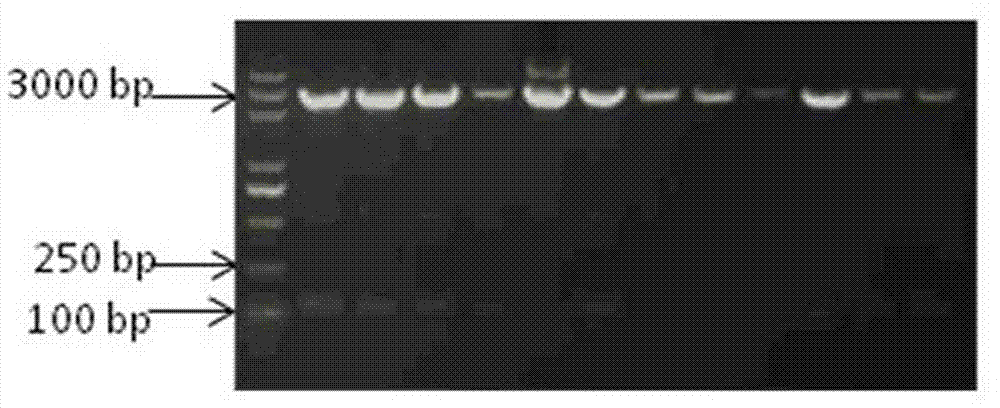DNA aptamer of small cell lung cancer marker gastrin releasing peptide precursor polypeptide fragment
A gastrin-releasing peptide and nucleic acid aptamer technology, applied in the field of chemical biology, can solve problems such as unseen screening
- Summary
- Abstract
- Description
- Claims
- Application Information
AI Technical Summary
Problems solved by technology
Method used
Image
Examples
Embodiment
[0030] (1) In order to couple proteins on carboxyl-modified micron magnetic beads, first use 1-ethyl-3-(3-dimethylaminopropyl)-carbodiimide (EDC) and N-hydroxysulfosuccinimide (Sulfo-NHS) was activated; the activated magnetic beads were treated with 0.01M MES buffer (2.13g / L morpholine-ethanesulfonic acid·H 2 (0, 0.31g / L boric acid, pH=9.0) after washing, react overnight with the protein or polypeptide to be coupled in MES (0.01M, pH=9.0) solution on a molecular hybridization instrument at 30°C with shaking. After the reaction, the magnetic beads were magnetically recovered, and then resuspended in 0.05M phosphate buffer saline (PBS) (pH=7.4) to form a 1 mg / mL magnetic bead solution.
[0031] (2) Operation steps of DNA incubation and PCR amplification during SELEX screening:
[0032] First take 30 μL of Pro-GRP with a concentration of 1 mg / mL 31-98Coat the magnetic beads, wash thoroughly with Binding Buffer, and then resuspend them in 300 μL Binding Buffer for later use. Th...
PUM
 Login to View More
Login to View More Abstract
Description
Claims
Application Information
 Login to View More
Login to View More - R&D
- Intellectual Property
- Life Sciences
- Materials
- Tech Scout
- Unparalleled Data Quality
- Higher Quality Content
- 60% Fewer Hallucinations
Browse by: Latest US Patents, China's latest patents, Technical Efficacy Thesaurus, Application Domain, Technology Topic, Popular Technical Reports.
© 2025 PatSnap. All rights reserved.Legal|Privacy policy|Modern Slavery Act Transparency Statement|Sitemap|About US| Contact US: help@patsnap.com



